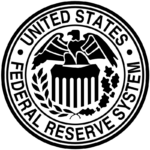The ‘10% recession rule’ suggests a welcome slowdown for the U.S. economy
- A reliable recession indicator triggered last week
- The indicator suggests a welcome slowdown for the U.S. economy
- The triggering could encourage the Federal Reserve to cut interest rates
- Investors reacted positively to the April jobs data
- Stocks rallied and the S&P 500 is on track for its fourth straight session in the green
- Unemployment rate ticked higher to 3.9% in April
- U.S. economy created 175,000 new jobs, missing expectations
- Slowdown in wage growth could help tamp down inflation
- The Sahm rule came closer to triggering in April
- The Sahm rule offers an advance warning about a recession
A reliable recession indicator maintained by market strategists at Piper Sandler triggered last week. However, the strategists believe that this time the triggering is more likely a harbinger of a welcome slowdown for the U.S. economy, rather than a recession. The indicator, known as the ‘10% recession rule’, triggers when the three-month moving average of the number of unemployed people in the U.S. workforce rises 10% compared to the previous year. In the past, it has been a reliable indicator of an upcoming recession. But this time, it suggests that the U.S. labor market is shifting back toward its pre-pandemic norm. This interpretation is supported by investors’ positive reaction to the April jobs data, which sent stocks sharply higher. The S&P 500 is on track for its fourth straight session in the green. The triggering of the indicator could encourage the Federal Reserve to cut interest rates, which is bullish for both stocks and bonds. The unemployment rate ticked higher to 3.9% in April, and the U.S. economy created 175,000 new jobs, missing expectations. However, the slowdown in wage growth could help tamp down inflation. Another recession indicator, the Sahm rule, came closer to triggering in April based on the rise in the unemployment rate. The Sahm rule offers an advance warning about a recession ahead of an official declaration by the National Bureau of Economic Research.
Factuality Level: 3
Factuality Justification: The article provides information about a recession indicator triggered by Piper Sandler, but it lacks depth and context. It presents the triggering of the indicator as bullish for stocks without providing a comprehensive analysis or alternative perspectives. The article lacks in-depth explanation, contains some unnecessary details, and does not address potential counterarguments or limitations of the indicator.
Noise Level: 3
Noise Justification: The article provides a detailed analysis of a recession indicator triggered by the April employment report. It explains the implications for the U.S. economy, stocks, and bonds, supported by quotes from market strategists. The article stays on topic and provides relevant information without excessive noise or filler content.
Financial Relevance: Yes
Financial Markets Impacted: The article discusses the triggering of a recession indicator and its potential impact on stocks and bonds. It suggests that the indicator’s triggering may be interpreted as a welcome slowdown for the U.S. economy, which could encourage the Federal Reserve to cut interest rates. This interpretation has led to a bullish reaction in the stock market.
Presence Of Extreme Event: No
Nature Of Extreme Event: No
Impact Rating Of The Extreme Event: No
Rating Justification: The article does not describe any extreme event. It focuses on the triggering of a recession indicator and its implications for the U.S. economy and financial markets.
Public Companies: Piper Sandler (Not available)
Key People: Michael Kantrowitz (Chief Market Strategist at Piper Sandler), Claudia Sahm (Former Fed economist)
Reported publicly:
 www.marketwatch.com
www.marketwatch.com 





